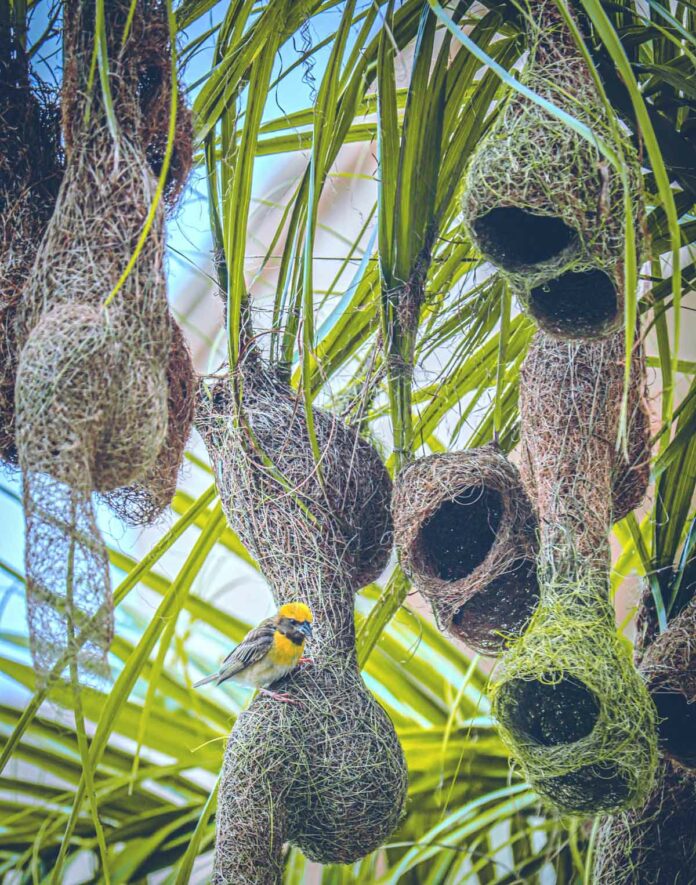A new study has discovered that birds build hanging nests to protect their offspring from nest invaders such as snakes and parasitic cuckoos. It is particularly those with long entrance tunnels.
Researchers from Durham University, the British Trust for Ornithology and Princeton University investigated the relationship between nest design and the amount of time offspring spend in the nest before fledging in weaverbirds and icterids. They have investigated two bird families known for their intricate woven nests.
They discovered that the species that build the most elaborate nests have offspring with longer developmental periods. It is especially those with long entrance tunnels.
Longer entrance tunnels are more effective than shorter tunnels at preventing nest invader access. It limits the exposure of developing offspring to nest invaders.
The complex structural features of these nests do play a role in protecting offspring from predators and brood parasites.
They find the consistency of their findings to be amazing. Scientists said that highly elaborate nests evolved independently in weaverbirds and icterids.
The study’s full analysis was published in the journal Proceedings of the Royal Society B.
“Ornithologists have long been fascinated by the beautifully woven nests of weaverbirds and icterids. These nests often dangle precariously from slim branches. They also have extended entrance tunnels up to a metre long,” said Dr. Sally Street of Durham University.
Researchers have also discovered that birds construct elaborate nest to exert more control over their exposure to environmental hazards.
The scientists gathered information on nest design, life-history traits, body mass, and latitude in weaverbird. They have gathered information from icterid species and also from a variety of secondary sources.
Their findings show how animal architects can create protective environments that affect the development of their offspring.
According to the researchers, this could even help them understand the role of shelter-building in human evolution.
More information: Sally Street et al, Convergent evolution of elaborate nests as structural defences in birds, Proceedings of the Royal Society B: Biological Sciences (2022). DOI: 10.1098/rspb.2022.1734. royalsocietypublishing.org/doi … .1098/rspb.2022.1734

